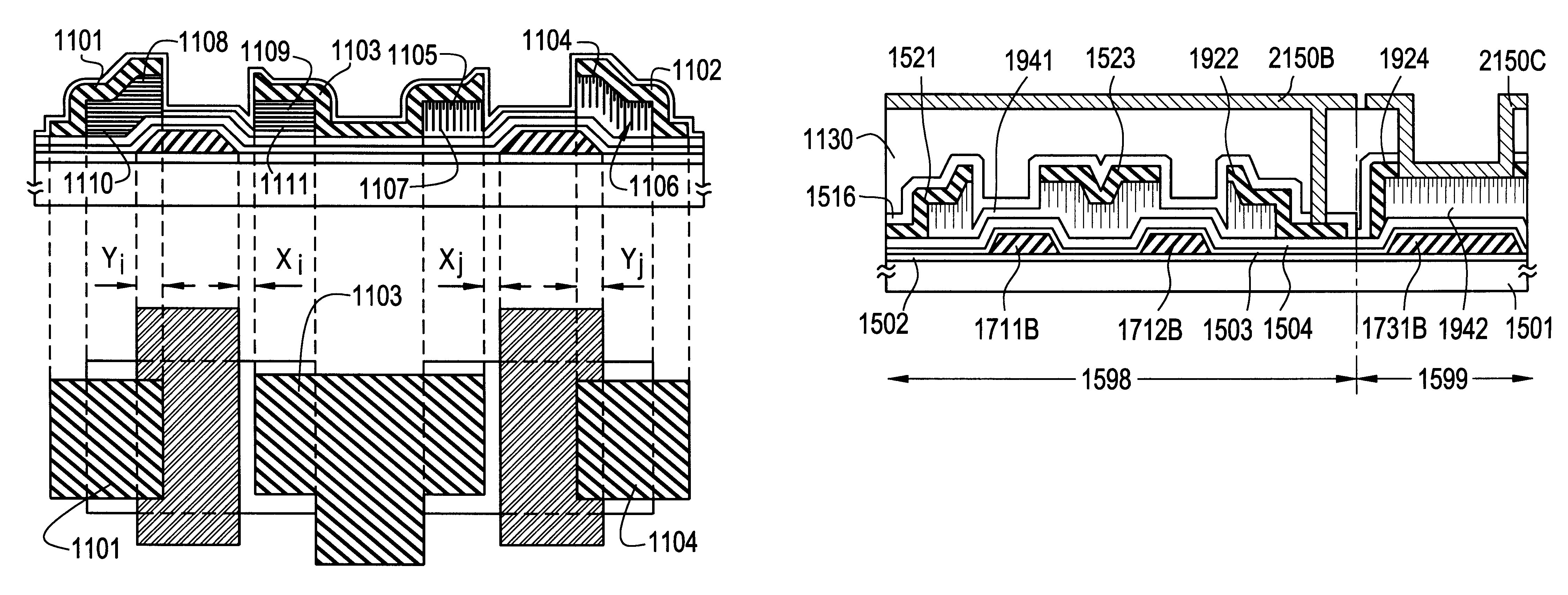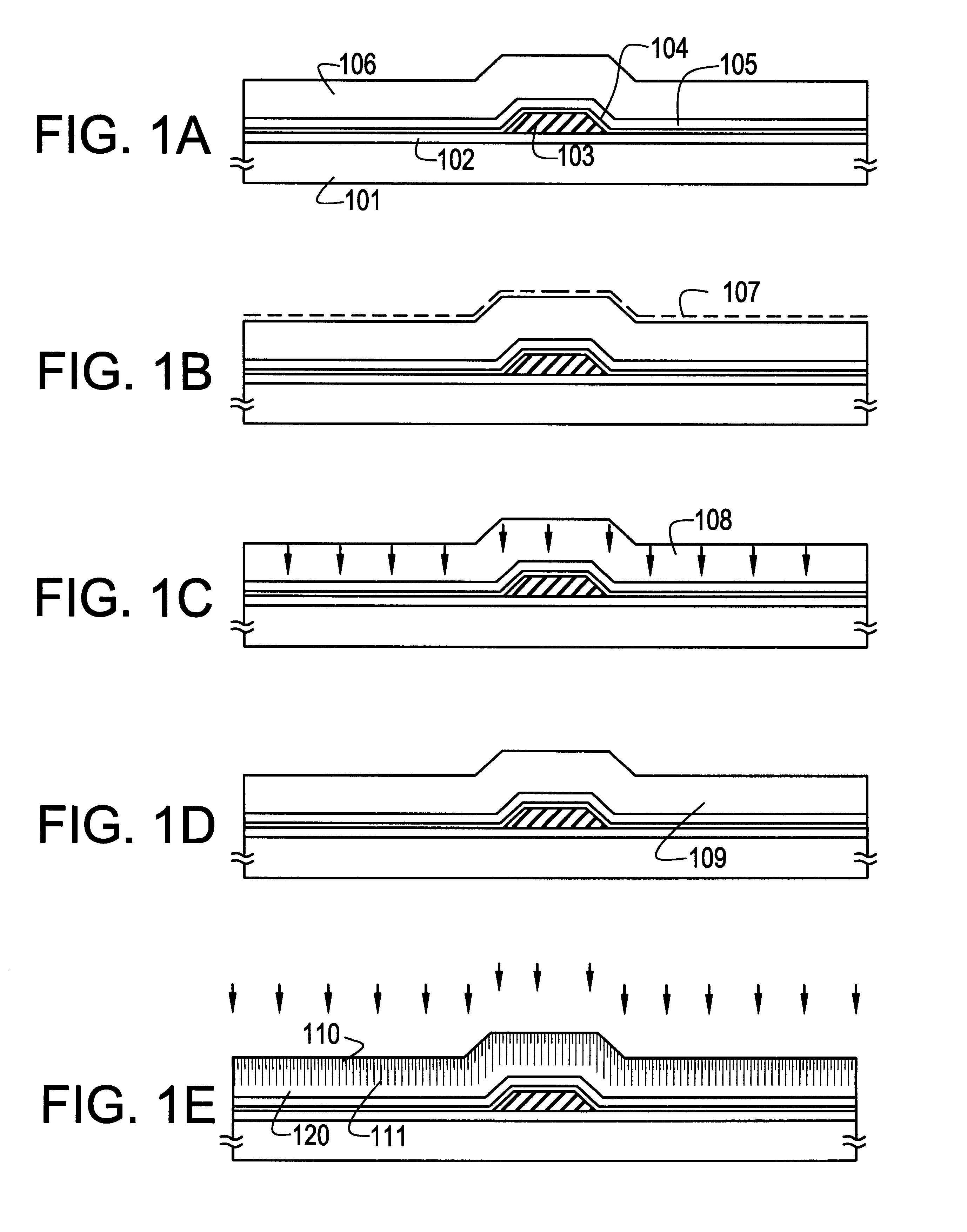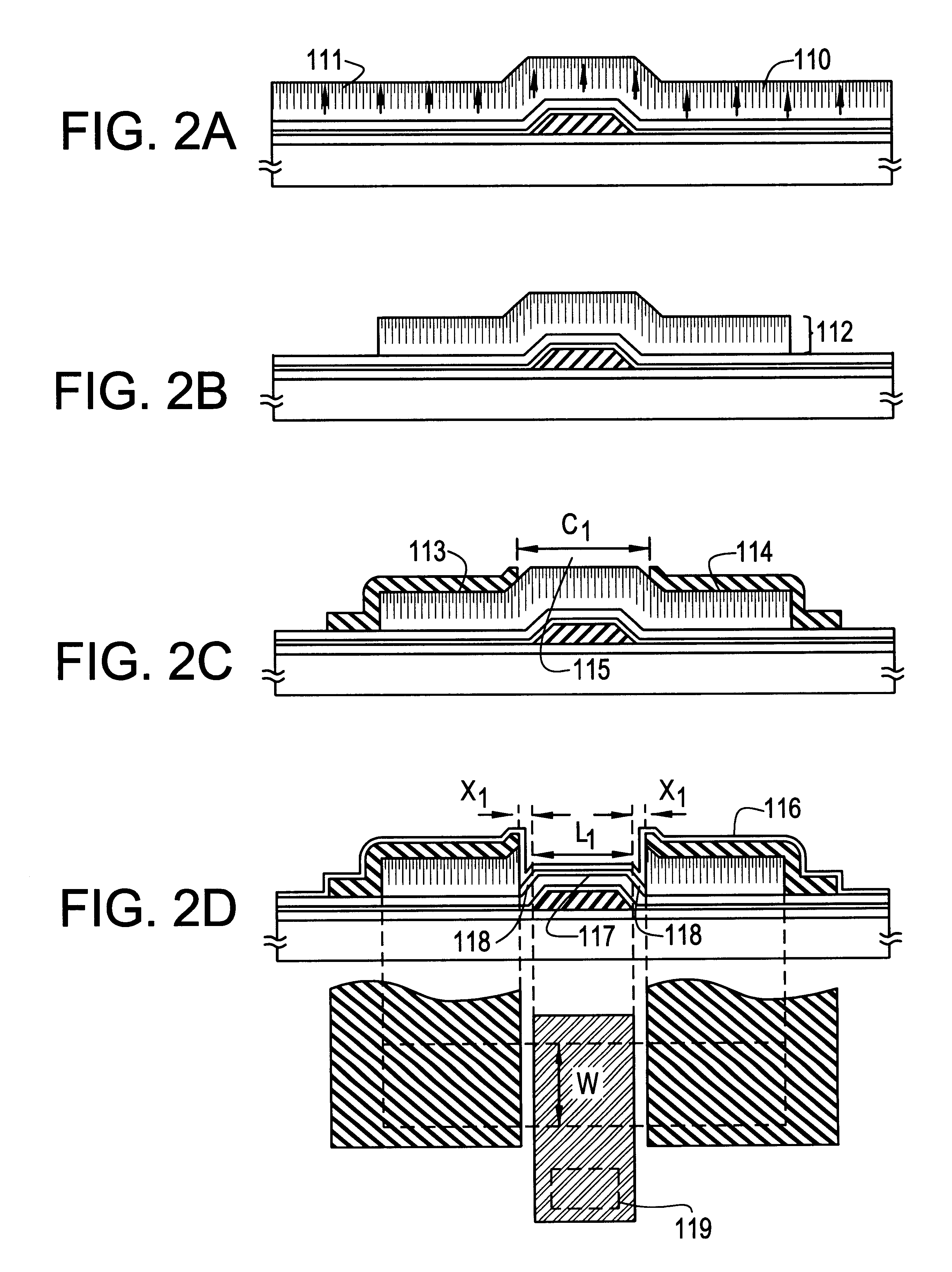Semiconductor device and fabrication method thereof
a technology of semiconductor devices and semiconductors, applied in semiconductor devices, instruments, optics, etc., can solve the problems of difficult to provide an element having sufficient function with operational speed, difficult to control the ldd region for these, and severe operation functions requested to
- Summary
- Abstract
- Description
- Claims
- Application Information
AI Technical Summary
Problems solved by technology
Method used
Image
Examples
embodiment 1
An explanation will be given of a representative embodiment according to the present invention in reference to FIGS. 1A-1E, 2A-2D and 3. First, an explanation will be given of a method of fabricating a semiconductor device according to the present invention in reference to FIGS. 1A-1E.
A base film 102 comprising an insulating film whose major component is silicon is formed on a glass substrate (or quartz, silicon substrate) 101. On top thereof, a gate electrode (first wiring) comprising a conductive film 103 is formed.
A line width of the gate electrode 103 is set to 1-10 .mu.m (representatively, 3-5 .mu.m). Further, the film thickness is set to 200-500 nm (representatively, 250-300 nm). In this embodiment, a gate electrode having a line width of 3 .mu.m is formed by using a Ta / TaN (tantalum / tantalum nitride) laminated layer film having a thickness of 250 nm.
Further, a material having heat resistance withstanding temperature of at least 600.degree. C. (preferably, 800.degree. C.) (tan...
embodiment 2
This embodiment is an example of crystallizing an amorphous silicon film by laser without using a catalyst element in Embodiment 1. An explanation will be given of a representative embodiment of the present invention in reference to FIGS. 5A-5D, 6A-6C and 7.
The line width of a gate electrode 203 is set to 1-10 .mu.m (representatively, 3-5 .mu.m). Further, the film thickness is set to 200-500 nm (representatively, 250-300 nm). According to the embodiment, a gate electrode having the line width of 3 .mu.m is formed by using an aluminum film (including 2 wt % of scandium) having a thickness of 250 nm.
Further, other than aluminum, the gate electrode 203 can use tantalum, tungsten, titanium, chromium, molybdenum, conductive silicon, metal silicide, laminated layer films of these and so on. At this stage, a first patterning step (gate electrode formation) is carried out.
At this stage, the gate electrode 203 is anodized and an anodic oxide film 204 for protecting the gate electrode is form...
embodiment 3
According to the embodiment, in the constitution of the present invention, an example of a constitution different from those of Embodiments 1 and 2 will be shown. The fabrication steps of TFT are basically carried out in accordance with those in Embodiments 1 and 2 and accordingly, in this embodiment, an explanation will be given only of necessary portions.
First, a state of FIG. 8A is provided in accordance with the fabrication steps of Embodiment 1 or Embodiment 2. In this case, a point different from Embodiments 1 and 2 resides in that a length of a channel etch region 800 is set to C.sub.2 in forming a source electrode 801 and a drain electrode 802. In this case, C.sub.2 is narrower than the width of the gate electrode and is selected in a range of 2-9 .mu.m (representatively, 2-4 .mu.m). It is the characteristic of this embodiment to provide a gate electrode and source and drain electrodes to overlap each other.
When the channel etch step is carried out as shown by Embodiment 1 o...
PUM
| Property | Measurement | Unit |
|---|---|---|
| width | aaaaa | aaaaa |
| width | aaaaa | aaaaa |
| thickness | aaaaa | aaaaa |
Abstract
Description
Claims
Application Information
 Login to View More
Login to View More - R&D
- Intellectual Property
- Life Sciences
- Materials
- Tech Scout
- Unparalleled Data Quality
- Higher Quality Content
- 60% Fewer Hallucinations
Browse by: Latest US Patents, China's latest patents, Technical Efficacy Thesaurus, Application Domain, Technology Topic, Popular Technical Reports.
© 2025 PatSnap. All rights reserved.Legal|Privacy policy|Modern Slavery Act Transparency Statement|Sitemap|About US| Contact US: help@patsnap.com



